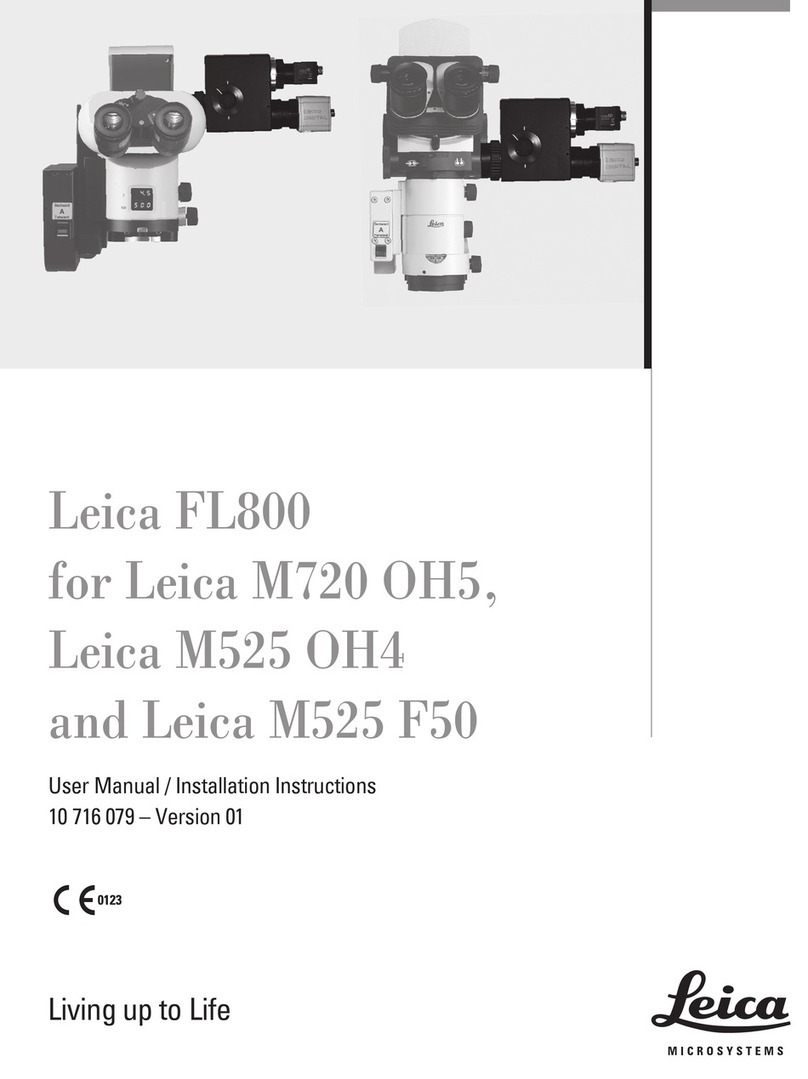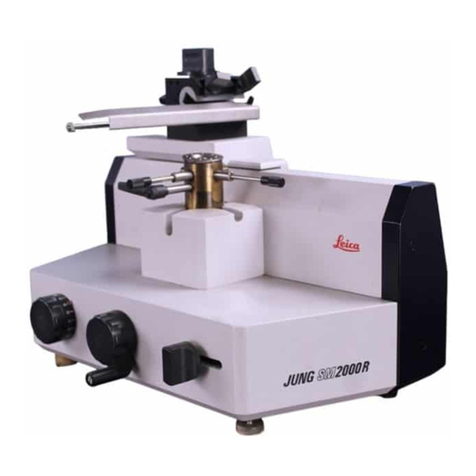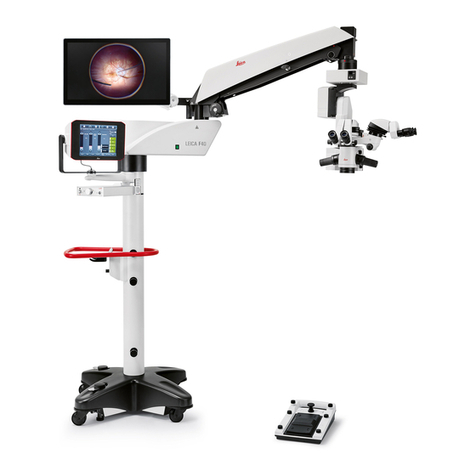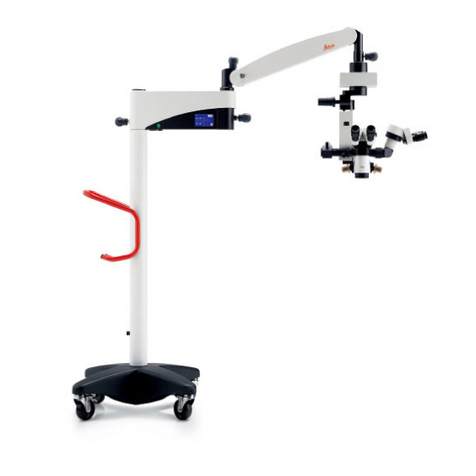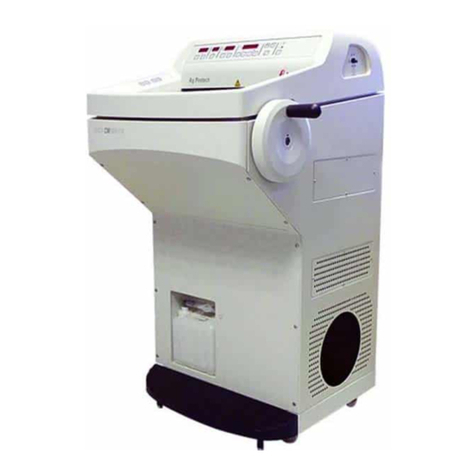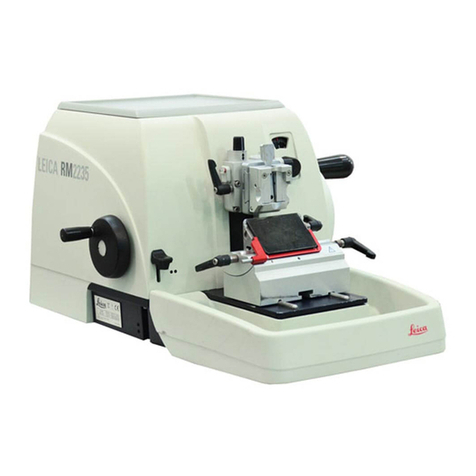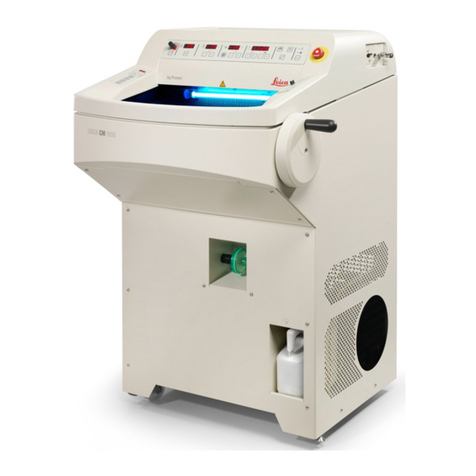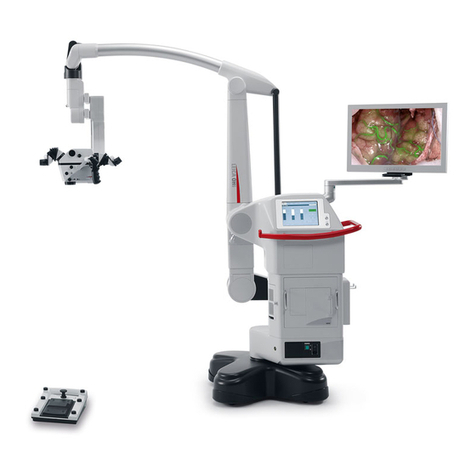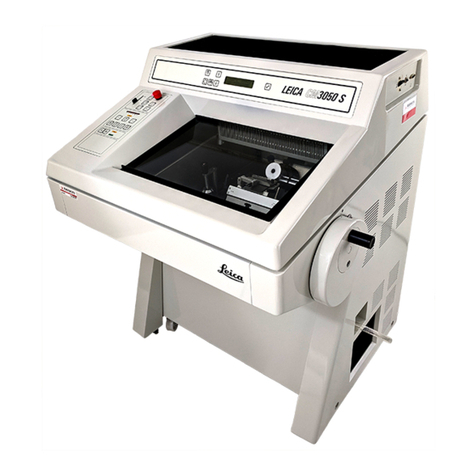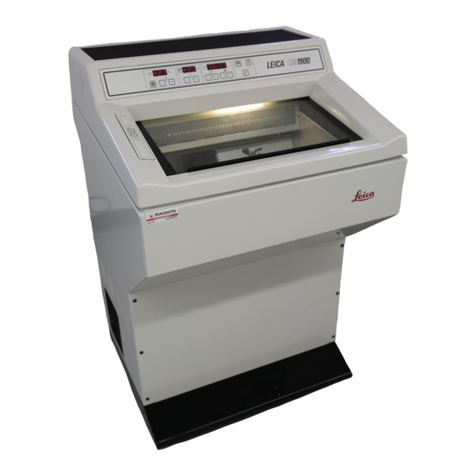3
Leica CM 1850 – Cryostat
Leica Microsystems Nussloch GmbH
Heidelberger Str. 17 19
D 69226 Nussloch
Germany
Phone: +49 (62 24) 143 0
Fax: +49 (62 24) 143 200
eMail: histo_info@leica microsystems.com
Internet: http://www.histo solutions.com
Serial No.: ....................................................................
Year of Manufacture: ................................................
Country of Origin: .. Federal Republic of Germany
For erroneo s statements, drawings, technical il-
l strations etc. contained in this man al we ex-
cl de liability as far as permissible according to
the national legal system applicable in each indi-
vid al case. In partic lar, no liability whatsoever
is accepted for any financial loss or conseq en-
tial damage ca sed by or related to compliance
with statements or other information in this
man al.
Statements, drawings, ill strations and other in-
formation as regards contents or technical de-
tails of the present man al are not to be consid-
ered as warranted characteristics of o r
prod cts. These are determined only by the con-
tract provisions agreed between o rselves and
o r c stomers.
Leica reserves the right to change technical
specifications as well as man fact ring pro-
cesses witho t prior notice. Only in this way is it
possible to contin o sly improve the technology
and man fact ring techniq es sed in o r prod-
cts.
This doc ment is protected nder copyright laws.
Any copyrights of this doc ment are retained by
Leica Microsystems N ssloch GmbH.
Any reprod ction of text and ill strations (or of
any parts thereof) by means of print, photocopy,
microfiche, web cam or other methods – incl d-
ing any electronic systems and media – req ires
express prior permission in writing by Leica
Microsystems N ssloch GmbH.
For the instr ment serial n mber and year of
man fact re, please refer to the name plate at
the back of the instr ment.
© Leica Microsystems N ssloch GmbH
The information, n merical data, notes and val e
j dgments contained in this man al represent the
c rrent state of scientific knowledge and state-
of-the-art technology as we nderstand it follow-
ing thoro gh investigation in this field. We are
nder no obligation to pdate the present man al
periodically and on an ongoing basis according
to the latest technical developments, nor to pro-
vide o r c stomers with additional copies, p-
dates etc. of this man al.
INFORMATION








